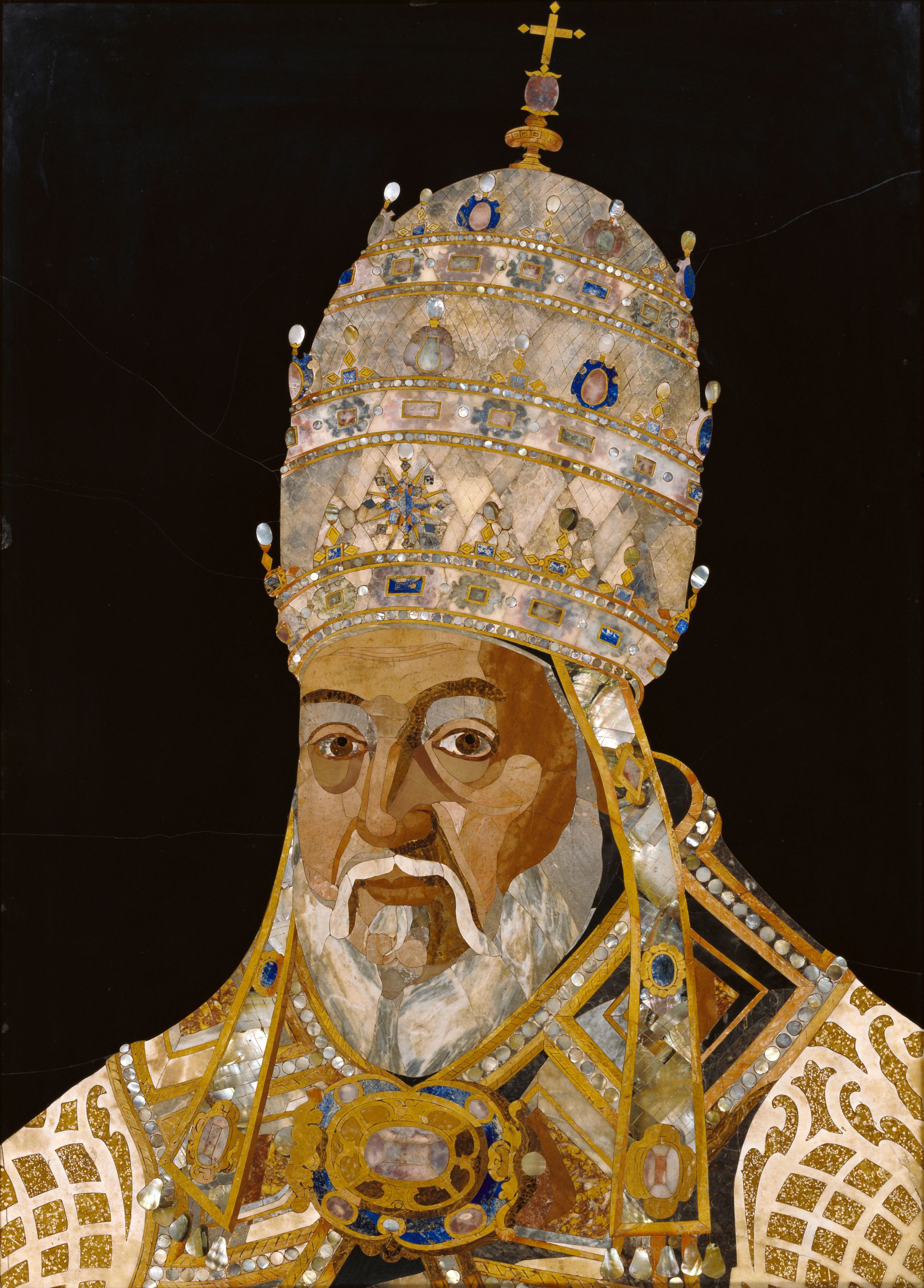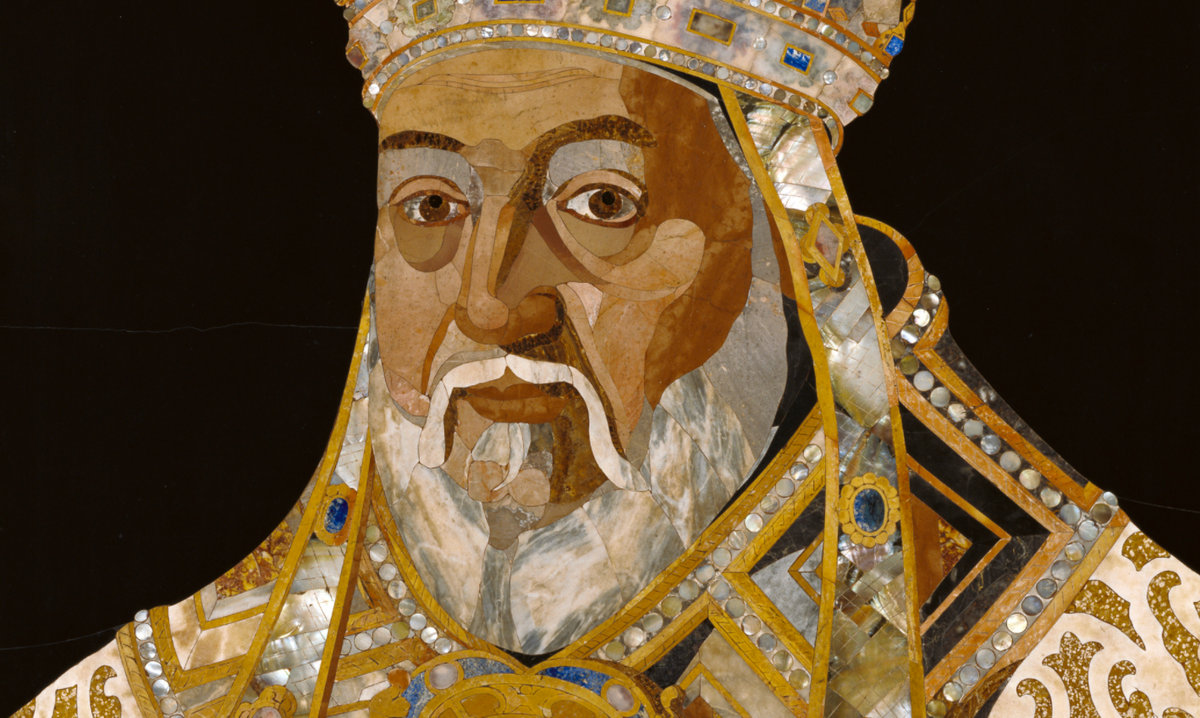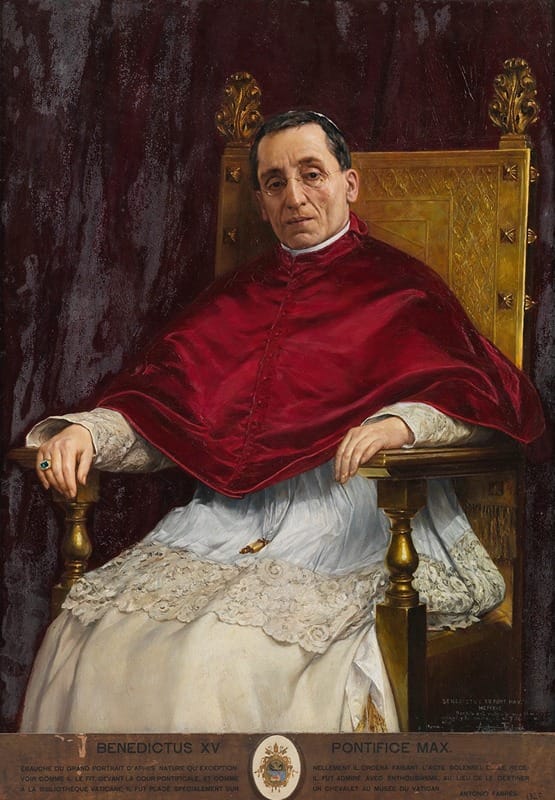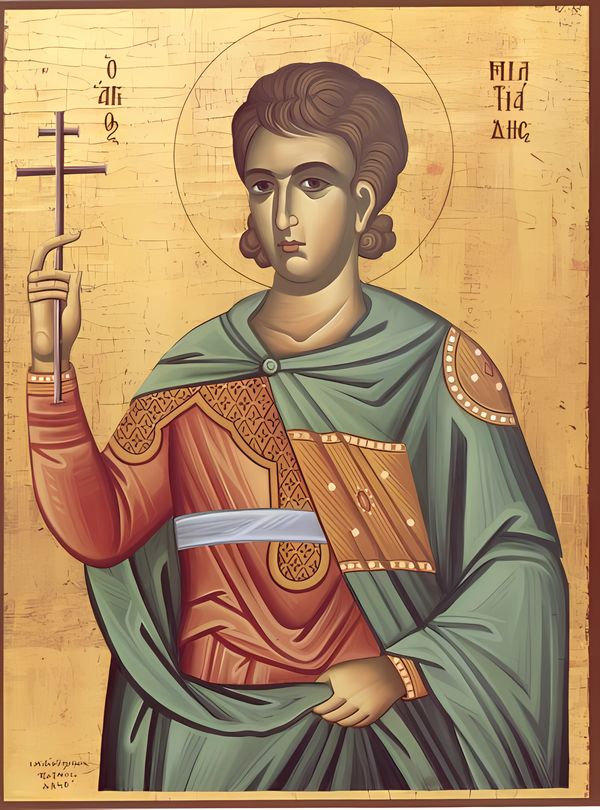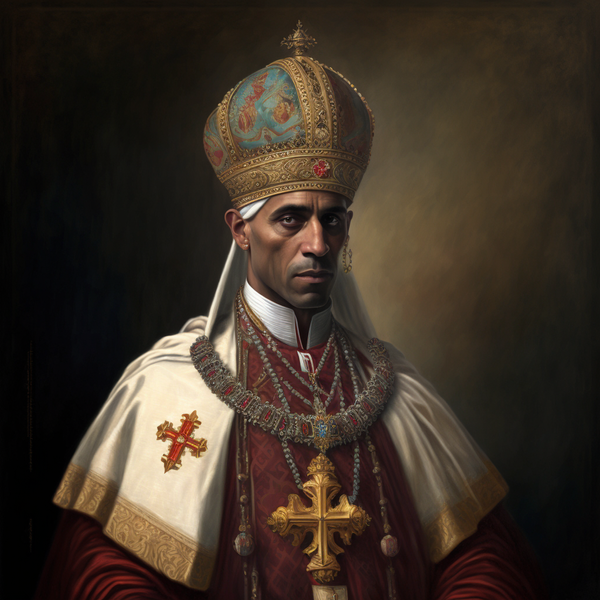“Commesso can best preserve antiquity and memory...and can resist all the battles of water and wind and other mishaps of fortune and of time.”
Thus Giorgio Vasari wrote of commesso, a newly revived antique technique for making pictures with cut stone. His comments suggest that Ferdinando I, Grand Duke of Tuscany, commissioned this portrait of Pope Clement VIII in 1601 to preserve the pope's memory, since he honored antique culture and learning. The rigidity of the mosaic medium and the luminescence of the stones, which were thought to carry intrinsic symbolic values, give the image an austere power.
Pope Clement VIII, born Ippolito Aldobrandini, was head of the Catholic Church and ruler of the Papal States from 2 February 1592 to his death. Born in Fano, Italy to a prominent Florentine family, he initially came to prominence as a canon lawyer before being made a Cardinal-Priest in 1585. In 1592 he was elected Pope and took the name of Clement. During his papacy he effected the reconciliation of Henry IV of France to the Catholic faith and was instrumental in setting up an alliance of Christian nations to oppose the Ottoman Empire in the so-called Long War.
Free Downloads Below
Hi-Res
1200px
800px
